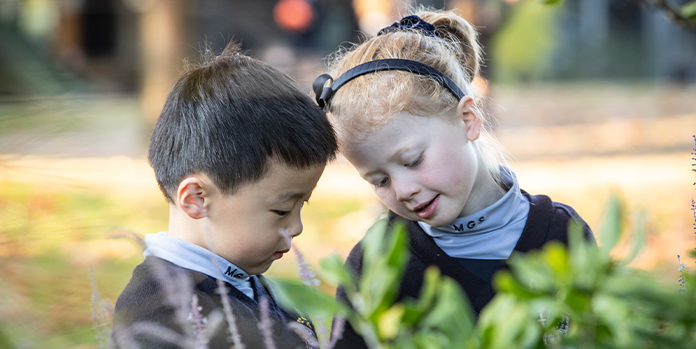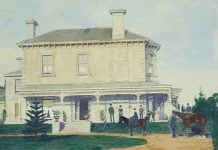The first years of schooling are one of the most intensive periods of learning in a person’s life. Not only are our youngest students absorbing extraordinary levels of new information and experiences, but they are also learning how to learn, who they are, and how to interact with others.
Our teachers use a multitude of different strategies to support this developmental stage, and need learning spaces that are flexible enough to accommodate them all. This is why, as we begin planning for the new Prep to Year 2 building at Grimwade House, we are carefully designing classrooms which meet the students and teachers at their point of need.
Laying the groundwork for success
In our Junior Primary classrooms, we build the all-important foundations so our students become knowledgeable, confident, independent learners.
All learning occurs by building concepts through clusters of knowledge, which help us understand how the world works. Recognising patterns and relationships between objects, ideas and people underpin this learning.
It can be easier for older students to build concepts because they have more stored information and knowledge to draw from. However, Prep students need to both gather new information and then understand how it fits within a concept, so we start with a guided approach and encourage students to ask questions.
Actions that might seem quite simple, like drawing a picture of your family, or comparing the sizes of leaves the class has collected, are actually concept building exercises. As students’ proficiency with a concept grows, so does the complexity of ideas and connections we can introduce to them.
What is important is that Prep students are taught to learn how to develop concepts for themselves. This sets the framework for future learning success. We believe the best method to do this is ‘learning by doing’ and for this to work well we need flexible, functional spaces and teaching tools that allow students to experiment, explore, and discover.
How flexible spaces create focus
Recent neuroscience research tells us that, no matter how motivated we are, we only have a limited amount of energy or focus we can apply to a learning task at any point in time. Prep students are relying on an attention span that lasts about 10 to 15 minutes before they need to reset their focus by moving to something new or different.
One way to facilitate this is to have a classroom that offers more space so teachers have room to create more interactive learning areas. While a standard classroom is around 60 square metres, our new Grimwade House classrooms will be around 100 square metres, which means students will be able to move between activity stations – or learning zones – without leaving the familiarity of their classroom. They will also be a suitable distance from other zones and activities to avoid distraction.
With more room to move, students might start by sitting in a semicircle and listening to a story about a fairy, then grow their mathematical knowledge by sitting at a table to build a fairy house with a small group of others and developing their measurement skills.
They might work by themselves in a quiet zone drawing pictures of fairies at play and then have an individual discussion with a teacher about their picture, with both story-telling activities building literacy concepts in preparation for the time when the students can write complex sentences.
In addition, in practical terms, larger classrooms mean teachers can set up various learning zones at the beginning of the day, allowing for more teaching time and less time spent rearranging zones throughout the day.
Linking indoor and outdoor learning spaces
All students need to feel comfortable before they feel ready to learn. We want to instil a love of learning in our young students, and this means making sure the classroom is a place where they feel calm, safe, and secure.
The new Grimwade House building will, of course, have all the design basics in place: good light and ventilation, colours that create vibrancy and warmth, and a sense of spaciousness but, along with this, they will have creative spaces for learning zones, withdrawal spaces to support students who might need extra support or extension and adequate storage facilities.
The classrooms on ground level will also have a strong link to the environment outside the classroom. This has many benefits. A view to, and interaction with, nature has a calming effect, so students will feel settled and focused.
The glass outer walls of the classroom will open up to sensory gardens outside and, when the learning activity calls for it, students will be able to move into their curated surrounds straight from their classroom. This variety of experience will help students strengthen their conceptual understanding of their world.
The new Junior School building will continue to build on an infrastructure gifted to the School many years ago and enable us to continue to do what we do best – build the strong foundations for a life of learning.
Royce Helm
Head of Grimwade House



